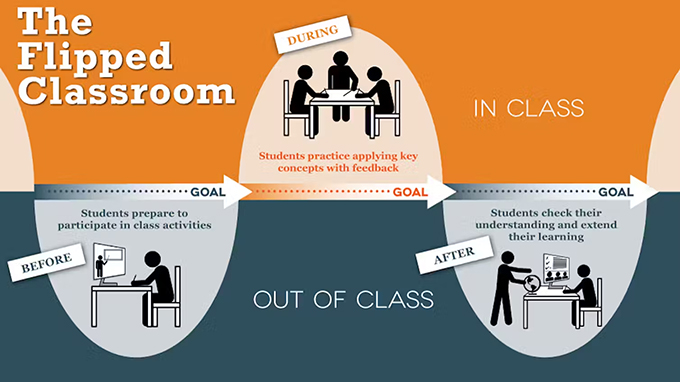
Social media (social media) are pages or applications that allow users to create and share content or engage in social networks . In Indonesia, the 10 most widely used social media platforms are: WhatsApp, Instagram, Facebook, TikTok, Telegram, X (formerly Twitter), Facebook Messenger, Pinterest, Kuaishou, and LinkedIn.
The popularity of social media has also penetrated the world of education. Apart from students, many teachers are also active in creating content on social media. Recently, for example, Indonesian netizens discussed the figure of Melan Achmad , a retired teacher who consistently teaches mathematics via live broadcasts on TikTok.
This is a positive step because social media can be a space for teachers to correct inaccurate information, develop more interactive learning methods and develop themselves through networking.
Contribution of teacher presence on social media
There are three main reasons why teachers need to be present on social media, namely:
1. As a correction and confirmation mechanism
The number of young social media users in Indonesia is very significant . Registration on social media can indeed be done without parents’ knowledge, by modifying their own date of birth even though social media such as Instagram , Facebook , Snapchat , TikTok and YouTube (except YouTube Kids) , have agreed to prohibit children under the age of 13 from accessing the platform. they.
This reality is worrying, because students currently prefer to use social media to find out information quickly, including for the purposes of their studies . In fact, the majority of young internet users, especially those from low socio-economic backgrounds, do not have good literacy .
This means that they do not yet have the skills to capture and process news from the media, such as recognizing political bias or identifying that a post on social media has been sponsored by a certain party.
Indeed, we have found a lot of content containing knowledge and information that is freely available on social media. Call it Bright Side , Did You Know , and Seputar Info 21 . Unfortunately, not all of these general knowledge resources can be verified because they can come from just anyone without a relevant professional or educational background.
This is where the role of teachers on social media is needed.
Not only in class, teachers need to accompany students in their learning through cyberspace, for example by clarifying incorrect information . Teachers can also present their respective expertise through their social media accounts, to balance and confirm the knowledge that is spread massively without control on social media.
2. Media sharing and collaboration
Teachers, individually or in groups, can create and upload content in various formats containing presentations of material according to their subjects on social media. This content can be limited to the students he teaches or to the wider public with the aim of sharing knowledge.
One example of this activity is an account called John Pare belonging to a teacher at an English language course institution in East Java. Regularly, he shares his knowledge of the foreign languages he teaches through his social media account Mr.Johnhid .
Another example is the channel The Crash Course which is hosted by brothers John Green and Hank Green. This YouTube channel presents various subject matters, ranging from history, biology, chemistry, and even literature, often collaborating with various teachers or experts in their respective fields.
In a similar category, maybe you also know Khan Academy and How Can You Do It ? The creators of these three channels provide flexibility for teachers to use their content in teaching and learning activities in the school environment.
Instead of repeating the same material in several different sessions, teachers can actually share upload links related to a topic with students to study first at home, before finally discussing or doing practical work in class. This concept is actually the idea of flipped learning ( the flipped classroom ) which is being popularly adopted by schools in Europe, North America, China and Australia , after the introduction of video as a learning medium several years ago.
Social media platforms can also be used as open-learning tools , so ideally they can create an interactive learning climate . This can be marked by discussions among students. This activity is then able to direct them towards collaborative learning activities rather than unhealthy competition in order to achieve certain grades.

Flipped Learning Infographic ( The Flipped Classroom ) – Center for Teaching and Learning/The University of Texas at Austin
3. Develop yourself and network

Teachers can also network on social media. Rawpixel.com/shutterstock.
Social media also provides an opportunity for teachers to expand their knowledge and build professional connections . By joining a community, teachers can discuss interesting and relevant topics, such as teaching methods and techniques, or evaluation. Participation in such forums not only enriches information, but also improves professional reputation and career prospects.
By creating personal branding and showing positive interest in the world of education through social media, teachers can help promote their school to prospective new students , attract prospective teachers to apply , and even improve the image of the teaching profession in society .
Apart from that, openness and smooth communication between teachers and parents can also be facilitated on social media. Through social media, parents can monitor and even be actively involved in their children’s learning activities, of course while maintaining a balance between the use of social media and other aspects of life , such as social roles, ethics, manners, and so on.
Things that need to be considered
1. Separate personal and professional accounts
Just as in real life, it is important for teachers to create clear boundaries between personal and professional life in cyberspace. Creating two separate social media accounts is one solution. For this reason, teachers need to observe a number of risks that may arise from the use of social networks, both for personal interests and within the framework of teaching .
For personal use, if necessary, teachers can lock their social media profiles. Another thing you can do is minimize the personal information shared, limit the number of friends, and only share with small groups (for example, closed friends on Instagram). If not, harassment on cyber networks by unscrupulous students against their teachers could happen again.
2. Use terms of reference and approval sheets
When using social media in a teaching and learning context, teachers should take full responsibility for the content that displays their students. This means that teachers need to prepare a work frame of reference before realizing their project on social media.
This document, among other things, must contain a written agreement regarding the use of copyright on images, state that the teacher will use certain accounts and social media, and ask permission from the parents or guardians of the students involved, so as to avoid conflict and misuse.
3. Strengthen digital ethics
Digital literacy actually plays a crucial role in helping people become intelligent, critical and responsible users. The use of social media in education must also be accompanied by a good understanding of digital ethics.
Teachers should be role models in using social media . Teachers need to direct students to use social media appropriately and wisely. As the main filter , teachers are required to avoid the spread of misinformation (hoaxes) and the circulation of hate content. In addition, teachers need to adapt to digital culture by following the language use and trends that students are interested in.
Thus, teachers’ use of social media must be carefully thought out and monitored. Teachers need to maintain the integrity and good name of their profession . However, technology products—including social media— should only be used in educational contexts if they support learning outcomes .
Author Bio: Elga Ahmad Prayoga is a Doctorant at the Université de Genève
